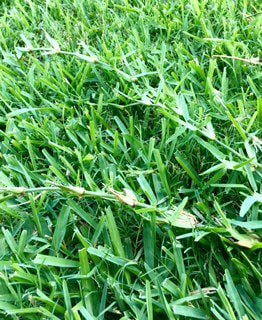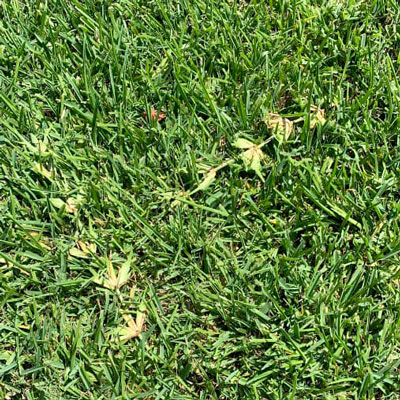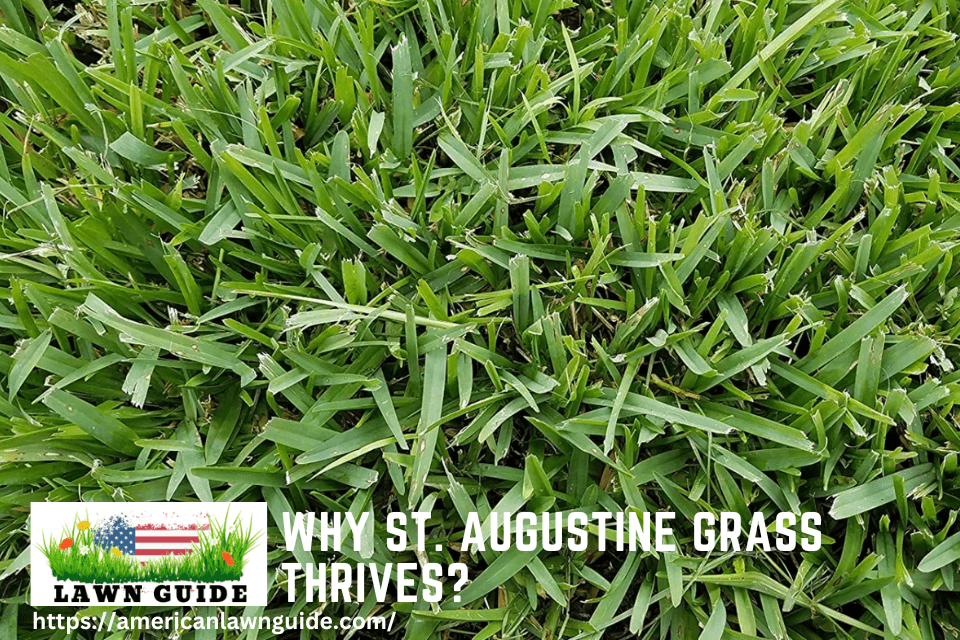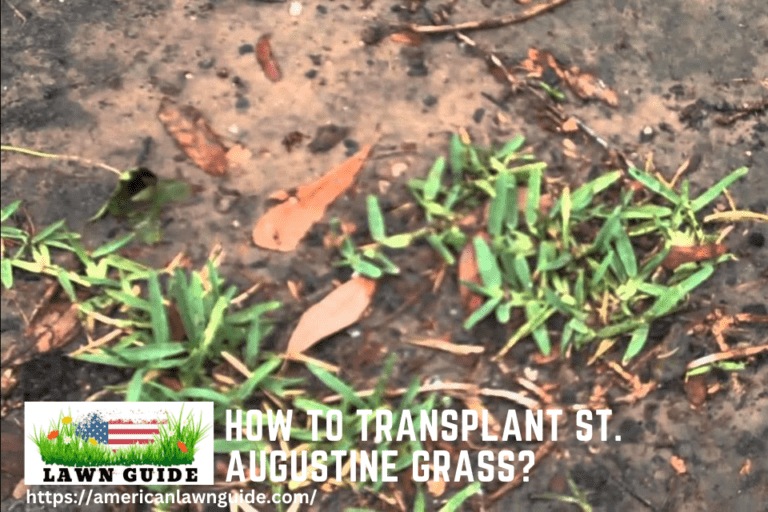St. Augustine grass has top runners, called stolons, to spread and establish new growth areas. This helps it cover ground quickly.
St. Augustine grass is popular for its lush, dense, and green appearance. It thrives in warm climates and is often used in lawns and gardens. The grass spreads through top runners, known as stolons, which allow it to cover large areas efficiently.
These stolons grow horizontally above the soil, producing new shoots and roots at intervals. This growth habit helps St. Augustine grass quickly establish a thick, carpet-like lawn. It also aids in filling bare spots and repairing damaged areas. Homeowners and landscapers appreciate this grass for its ability to create a uniform and attractive lawn with minimal effort.

The Biology Of St. Augustine Grass
St. Augustine grass is a popular choice for lawns. Its lush, green blades create a beautiful landscape. Understanding its biology helps in maintaining it well.
Unique Characteristics Of St. Augustine Grass
St. Augustine grass has unique features that set it apart. Its broad, flat blades are distinctive. The grass grows well in warm climates. It has a high tolerance for salt. This makes it suitable for coastal areas.
The Role Of Stolons In Growth And Spread
Stolons, or top runners, play a vital role in St. Augustine grass. They are horizontal stems that grow above ground. These stolons help the grass spread quickly.
Here are some key points about stolons:
- Stolons produce new roots at nodes.
- They aid in rapid lawn coverage.
- They help the grass fill in bare spots.
Because of stolons, St. Augustine grass can repair itself. It creates a dense, lush lawn over time.

Optimal Growing Conditions For St. Augustine
St. Augustine grass thrives in specific conditions. Understanding these helps maintain its health and beauty. This grass is known for its thick, lush blades and top runners. These runners help the grass spread and cover the ground evenly.
Climate Preferences Of St. Augustine Grass
St. Augustine grass prefers warm climates. It grows best in areas with mild winters and hot summers. The grass can tolerate brief cold snaps but doesn’t thrive in prolonged cold weather.
In the United States, St. Augustine grass is popular in the southern states. States like Florida, Texas, and the Carolinas provide the ideal climate. The grass enjoys temperatures between 70°F and 90°F.
Soil And Water Requirements For Healthy Growth
St. Augustine grass needs well-draining soil. The soil should be fertile and rich in organic matter. Sandy and loamy soils are ideal for this grass. A soil pH between 5.0 and 8.5 is best for optimal growth.
| Soil Type | Suitability |
|---|---|
| Sandy Soil | Excellent |
| Loamy Soil | Excellent |
| Clay Soil | Poor |
Watering is crucial for St. Augustine grass. The grass requires regular watering, especially in dry periods. It needs about 1 inch of water per week. Over-watering can lead to root rot and other issues.
- Water once or twice a week
- Ensure even distribution of water
- Avoid watering at night to prevent fungal growth
By providing the right climate, soil, and water, St. Augustine grass will flourish. Its top runners will help cover your lawn with lush, green beauty.
Maintenance Practices For A Lush Lawn
Maintaining a lush St. Augustine grass lawn requires specific practices. It involves proper mowing, fertilization, and pest control. These practices help your lawn stay green and healthy.
Mowing Techniques For St. Augustine Grass
Mowing St. Augustine grass correctly is essential. Follow these tips:
- Mow at a height of 2.5 to 4 inches.
- Use a sharp mower blade.
- Do not remove more than one-third of the blade length.
- Mow when the grass is dry.
Proper mowing prevents stress on the grass. It encourages healthy growth and reduces weeds.
Fertilization And Pest Control Strategies
Fertilizing St. Augustine grass is important. Use a balanced fertilizer. Apply it during the growing season.
| Season | Fertilizer Type |
|---|---|
| Spring | Nitrogen-rich fertilizer |
| Summer | Slow-release fertilizer |
| Fall | Low-nitrogen fertilizer |
Pest control is also vital. Inspect your lawn regularly. Look for signs of insects or disease.
- Identify the pest.
- Choose an appropriate pesticide.
- Follow the label instructions.
Healthy lawns resist pests better. Maintaining your lawn well reduces pest problems.
Common Challenges And Solutions
St. Augustine grass is popular for its lush, green appearance. But it comes with challenges. Here are common issues and solutions.
Dealing With Shade And Cold Sensitivity
St. Augustine grass loves the sun. It struggles in shady areas. This grass needs at least four hours of sunlight daily. Too much shade makes it weak.
Cold weather is another challenge. St. Augustine grass is sensitive to frost. Low temperatures can damage its blades. To protect it, cover the lawn during cold spells.
| Challenge | Solution |
|---|---|
| Shade | Trim trees to let in more light. |
| Cold Sensitivity | Use frost blankets in winter. |
Recovery Tips For Damaged St. Augustine Lawns
St. Augustine grass can recover from damage. The key is proper care. Water the lawn deeply but not too often. This encourages deep root growth.
Fertilize the grass every two months. Use a balanced fertilizer. Mow the grass to the right height. The ideal height is 3 to 4 inches.
- Water deeply, not frequently.
- Fertilize every two months.
- Mow to 3-4 inches high.
If the lawn has bare spots, replant with St. Augustine sod. Make sure the soil is healthy. Aerate the lawn yearly to improve soil quality.
- Check soil health before planting.
- Replant bare spots with sod.
- Aerate yearly for better soil.

Frequently Asked Questions
What Are Top Runners In St. Augustine Grass?
Top runners are horizontal stems that grow above ground. They help the grass spread and cover bare spots.
Why Does St. Augustine Grass Need Top Runners?
Top runners help St. Augustine grass spread and establish a dense lawn. They fill in gaps, promoting a lush appearance.
How Do Top Runners Benefit St. Augustine Grass?
Top runners improve lawn coverage and thickness. They make the grass more resilient to wear and tear.
Can You Trim Top Runners In St. Augustine Grass?
Yes, trimming top runners helps manage growth and shape. It encourages a more uniform and healthier lawn.
Conclusion
St. Augustine grass has top runners to spread quickly and establish a dense, lush lawn. These runners help the grass repair damaged areas efficiently. Understanding this growth pattern allows for better lawn care practices. Proper maintenance ensures a healthy, vibrant St.
Augustine lawn that enhances your landscape’s beauty.
{ “@context”: “https://schema.org”, “@type”: “FAQPage”, “mainEntity”: [ { “@type”: “Question”, “name”: “What are top runners in St. Augustine grass?”, “acceptedAnswer”: { “@type”: “Answer”, “text”: “Top runners are horizontal stems that grow above ground. They help the grass spread and cover bare spots.” } } , { “@type”: “Question”, “name”: “Why does St. Augustine grass need top runners?”, “acceptedAnswer”: { “@type”: “Answer”, “text”: “Top runners help St. Augustine grass spread and establish a dense lawn. They fill in gaps, promoting a lush appearance.” } } , { “@type”: “Question”, “name”: “How do top runners benefit St. Augustine grass?”, “acceptedAnswer”: { “@type”: “Answer”, “text”: “Top runners improve lawn coverage and thickness. They make the grass more resilient to wear and tear.” } } , { “@type”: “Question”, “name”: “Can you trim top runners in St. Augustine grass?”, “acceptedAnswer”: { “@type”: “Answer”, “text”: “Yes, trimming top runners helps manage growth and shape. It encourages a more uniform and healthier lawn.” } } ] }



